Avignon, France
In which I visit the famous Pont d'Avignon, and learn the miraculous story of its construction, and then decide that Avignon is my kind of town.
{Avignon, France}
Miracles just don’t seem to happen as much as they used to, do they?
Or maybe we’re just a little more skeptical these days. If an uneducated, twelve-year-old shepherd told authorities in this day and age that he was going to build a bridge - by himself - over a particularly rough stretch of river because Jesus instructed him to in a vision…would they let him? Probably not. I mean, I hope not. But, according to legend, that is how the famous bridge at Avignon was built.
The bridge is now named for that shepherd: Pont Saint-Bénézet. In 1177 there was an eclipse, and during that eclipse the young shepherd Bénézet had a vision in which Jesus instructed him to build a bridge across the Rhône River. Up until this point, the river current at Avignon was thought to be too strong to stand a bridge. The closest (and only) bridge across the Rhône was about 15 miles upstream, just north of Orange. He approached the local authorities, who were at first unsurprisingly hesitant. But that didn’t stop Bénézet. He started to build the bridge on his own. And this is where it becomes obvious that things were different in 1177 than they are in 2023, because - instead of having him arrested - the Bishop of Avignon decided to give Bénézet the go-ahead to continue work on his bridge. And so he did, carrying stones that were much too heavy for a normal human being to carry from quarries nearby to the river.
That young Bénézet could carry these stones was viewed as a miracle by locals. They began to help him…and soon enough, miracles began to happen all over Avignon. Eighteen miraculous healings in total were attributed to Saint-Bénézet and his divine bridge building. The bridge was finished in 1185, just eight years after it was started. Bénézet died in 1184, and didn’t see the completion of the bridge - but his body was interred in a chapel built between the arches of the bridge, and shortly afterward he was sainted: Saint-Bénézet, patron saint of bachelors and bridge-builders.
The best view of the Pont Saint-Bénézet is from the Rocher des Doms, a rocky hill overlooking the river that is the highest point in the city. The Rocher is the diamond in the ring that is Avignon’s city walls: when the city walls were built in the 14th century, it only made sense for them to start and stop at the hill, as it had acted as a lookout point and natural defense for centuries. Later, in the 19th century, a beautiful and extensive English garden was built on this hill: it is called, predictably, the Jardin des Domes.
The beauty of having a Eurail global pass is that you can jump on a train to anywhere, anytime. And there are certainly plenty of places to visit in the south of France. But it is difficult not to keep coming back to Avignon. This is our fourth visit to the city, and every time we have made the long climb up to the Jardin des Doms. Avignon seems greener than most of Provence, anyway: there are trees everywhere, lining boulevards and shading gardens. But it is especially true in the Jardin Des Doms: light filters softly through green leaves, providing shelter from the brutal Provençal sun. It seems that all of the animals in Provence call this park home - swans and ducks float on the green pond, and squirrels and songbirds perch happily in the trees. It is a welcome change from the bugs and lizards that inhabit Arles.
I love the oversized, black-and-white photos of life in Avignon during the 1950s that are scattered throughout the park. They are a tribute to Jean Vilar, a French actor and director who founded the Avignon Festival - a local festival of arts and theater that has been taking place in Avignon since 1947. The festival takes place next door, in the square in front of Palais des Papes.
Because, of course, that is the other reason that Avignon is famous: the popes lived here for a while. The Avignon papacy lasted from 1309 to 1377 - a relatively short period of time. There were seven Avignon popes altogether, starting with Clement V and ending with Gregory XI - and each of them has a wine named for him in the Papal Palace gift shop. Clement the VII is a Chateauneuf-du-Pape, while Benoît XII is a Côtes-du-Rhône-Villages.
I’m not sure why this makes me laugh, but it does.
The massive Papal Palace itself is more imposing than beautiful, more fortress than palace. Despite crowds of tourists milling about, the large and spartan square in front that hosts the festival almost always feels empty, just because people are so small and the square is so very big. It is so large, in fact, that on the day we tour the palace, there are several groups of teenage girls spread out, using the square for dance and gymnastics practice. And still there is space.
Everyone should visit the Papal Palace when they are in Avignon. It is historic and impressive, one of the most visited sites in France. In fact, it would be easy to think that the Palace is the heart of the city, and yet…I don’t think it is.
Between the train station and the Papal Palace, inside of the Medieval city walls, lies a labyrinth of streets. And it seems to me that these streets are where the heart of Avignon really lies. This is the part I like best: the square with local vendors selling their wares. Inviting bakeries and cafés. Charming shops and lots of small, interesting museums. To be honest, I can’t put into words why I like Avignon so much, I only know that I do. The best I can do is a book lover’s analogy: you know when you go into a bookshop and you can’t find a single thing to read? And then you go into another bookshop down the way and you want to buy every book on the shelves? Because they just have the kind of stuff you like? That’s how Avignon is: it just has the kind of stuff I like.
So, I can tell you to visit Avignon, but there is no guarantee that you will love it as much as I do. Maybe it doesn’t have your kind of stuff.
But I do know this: whenever you tell someone that you are visiting Avignon, they seem to smile and start humming or singing:
Sur le pont d’Avignon, l’on y danse, l’on y danse…
As I stand on the Pont d’Avignon, I wonder to myself how much of the legend of Saint-Bénézet is true. And does it matter? In practical terms it might explain why the bridge is a ruin today. Because the existing Pont d’Avignon is just a fraction of what it once was. About four hundred years after it was completed, it started to collapse and wash away bit by bit. Now only four arches remain of the original 22 that spanned two branches of the river.
And yet, almost a thousand years after it was built, everyone knows about Bénézet’s bridge. And it seems to make everyone smile. Maybe that is miracle enough.



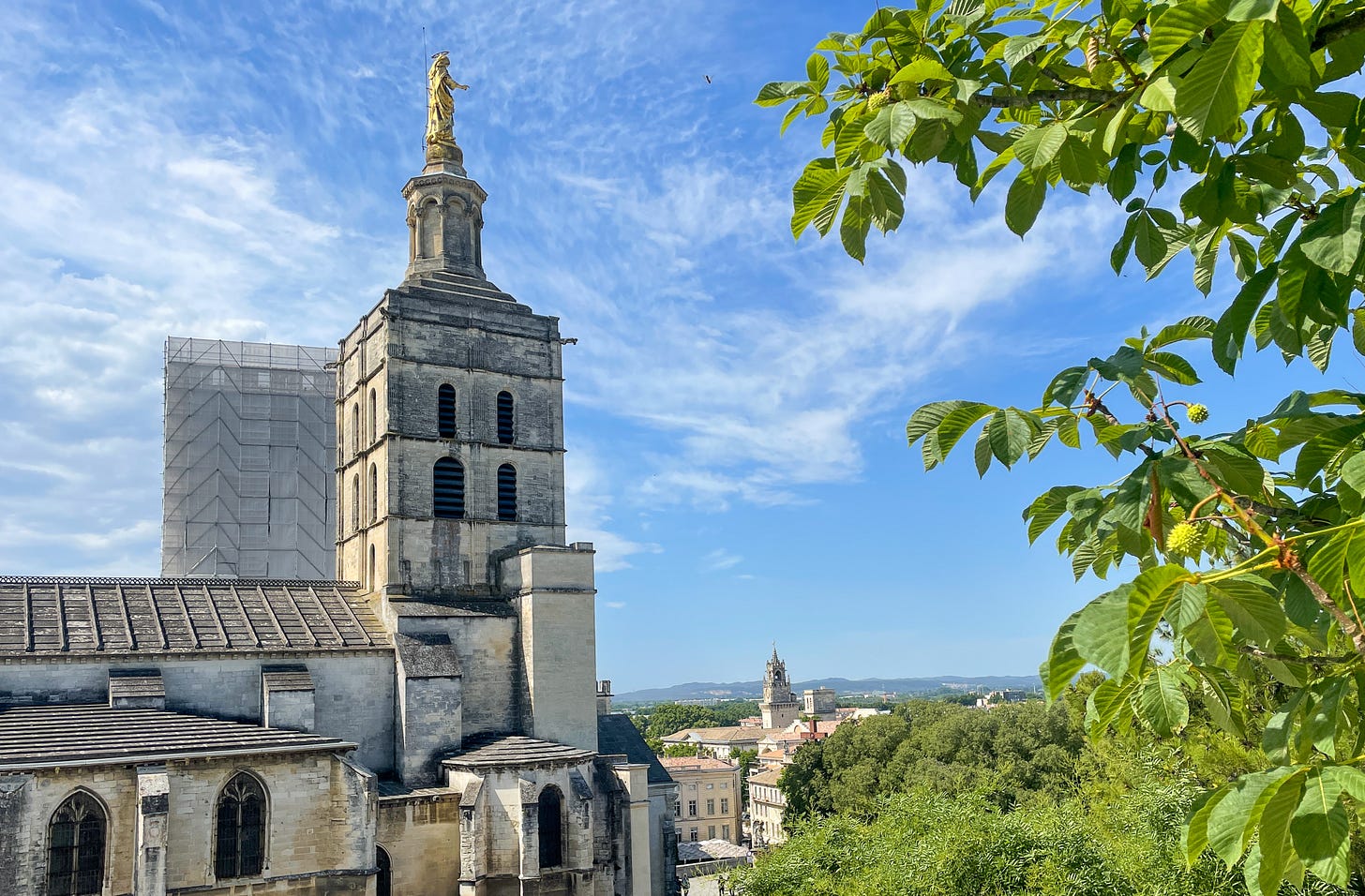


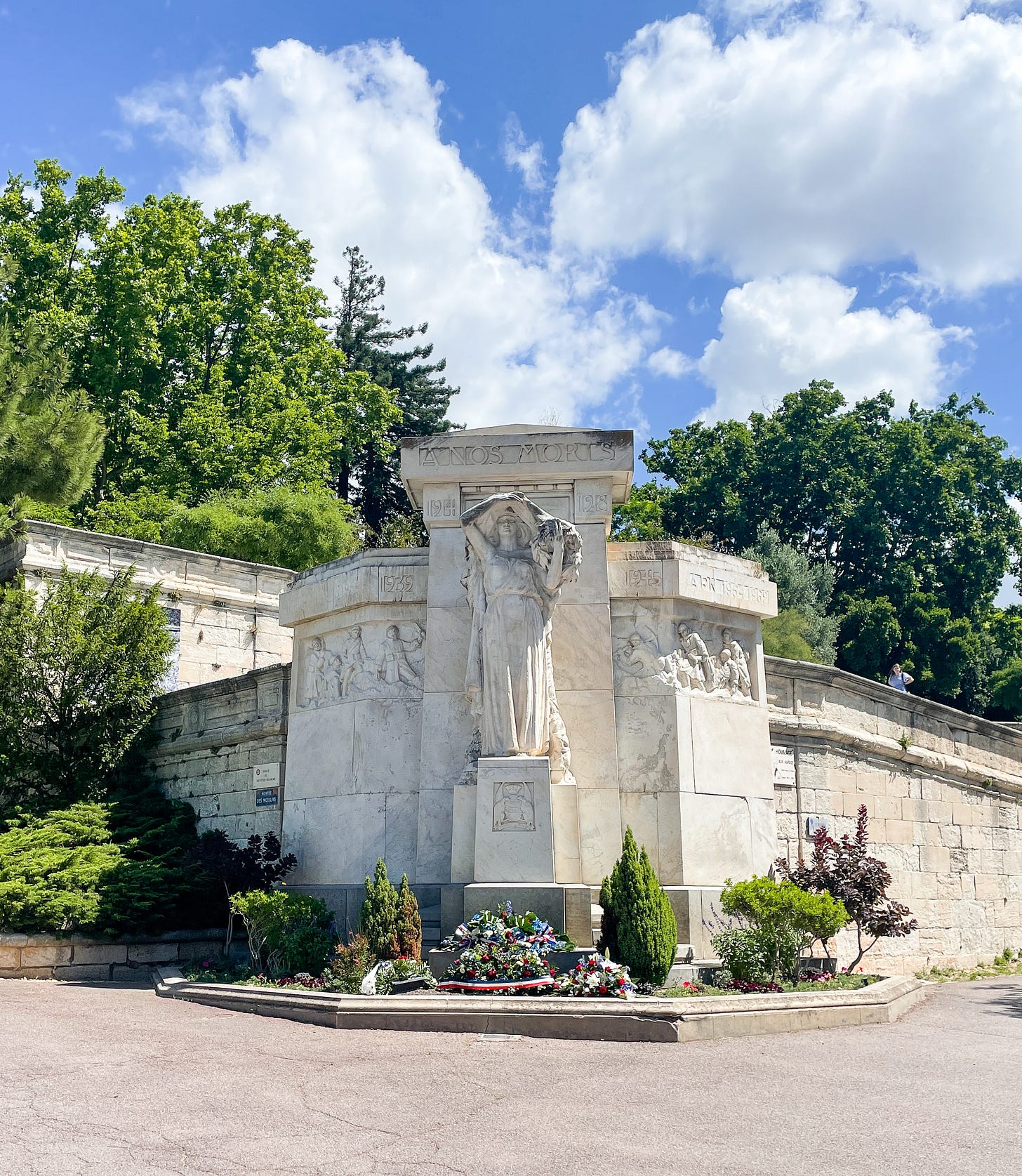
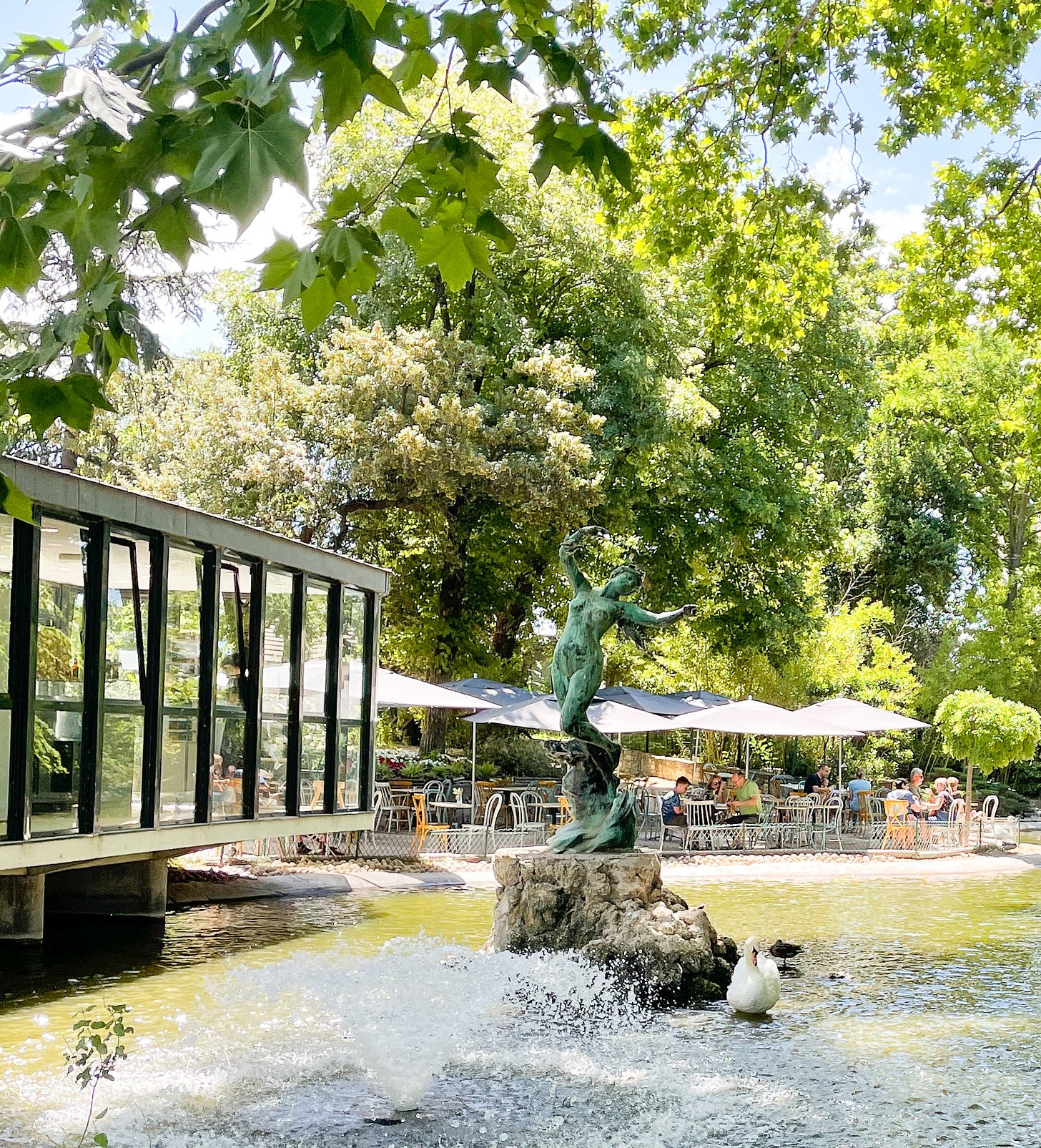

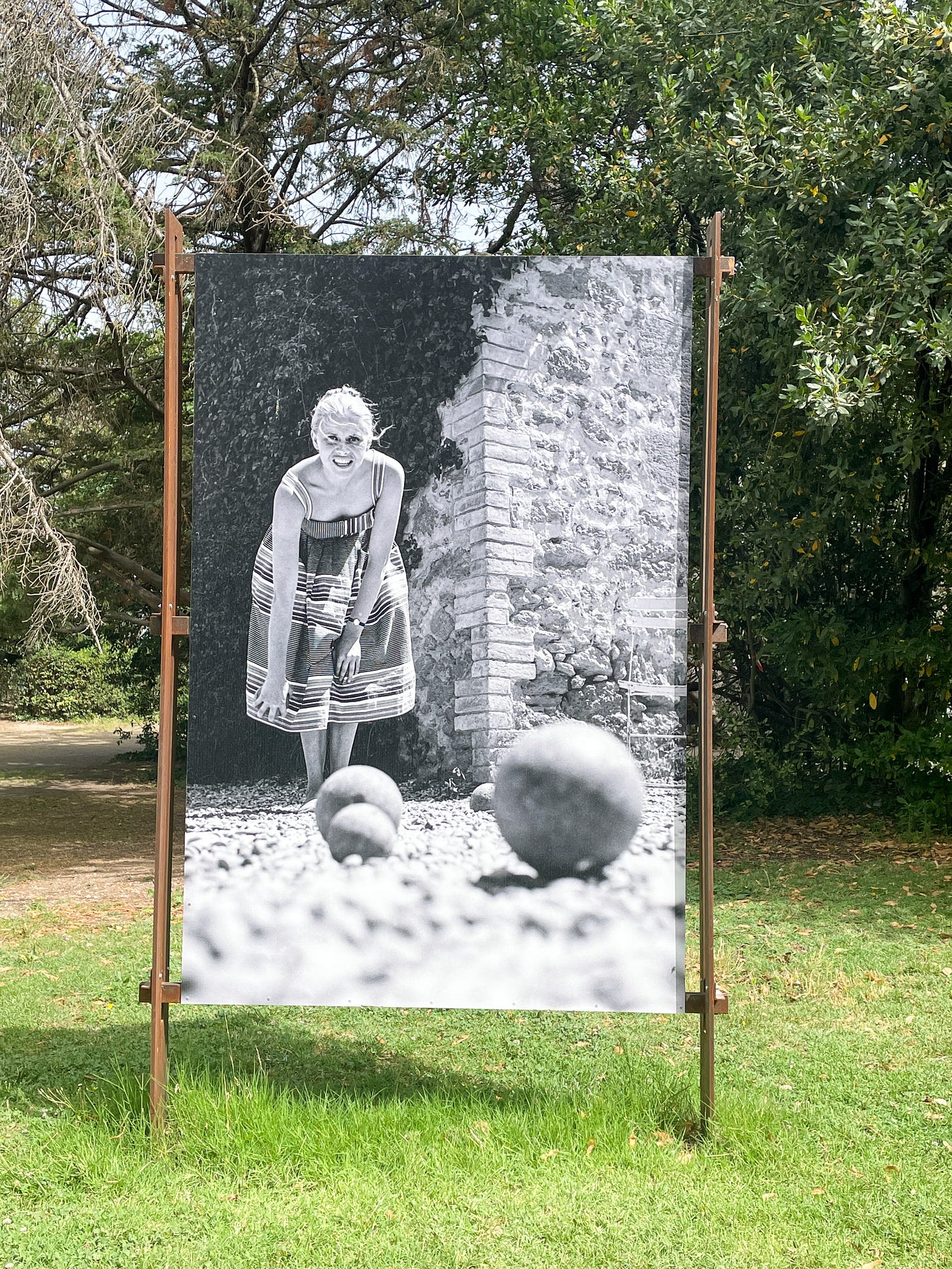
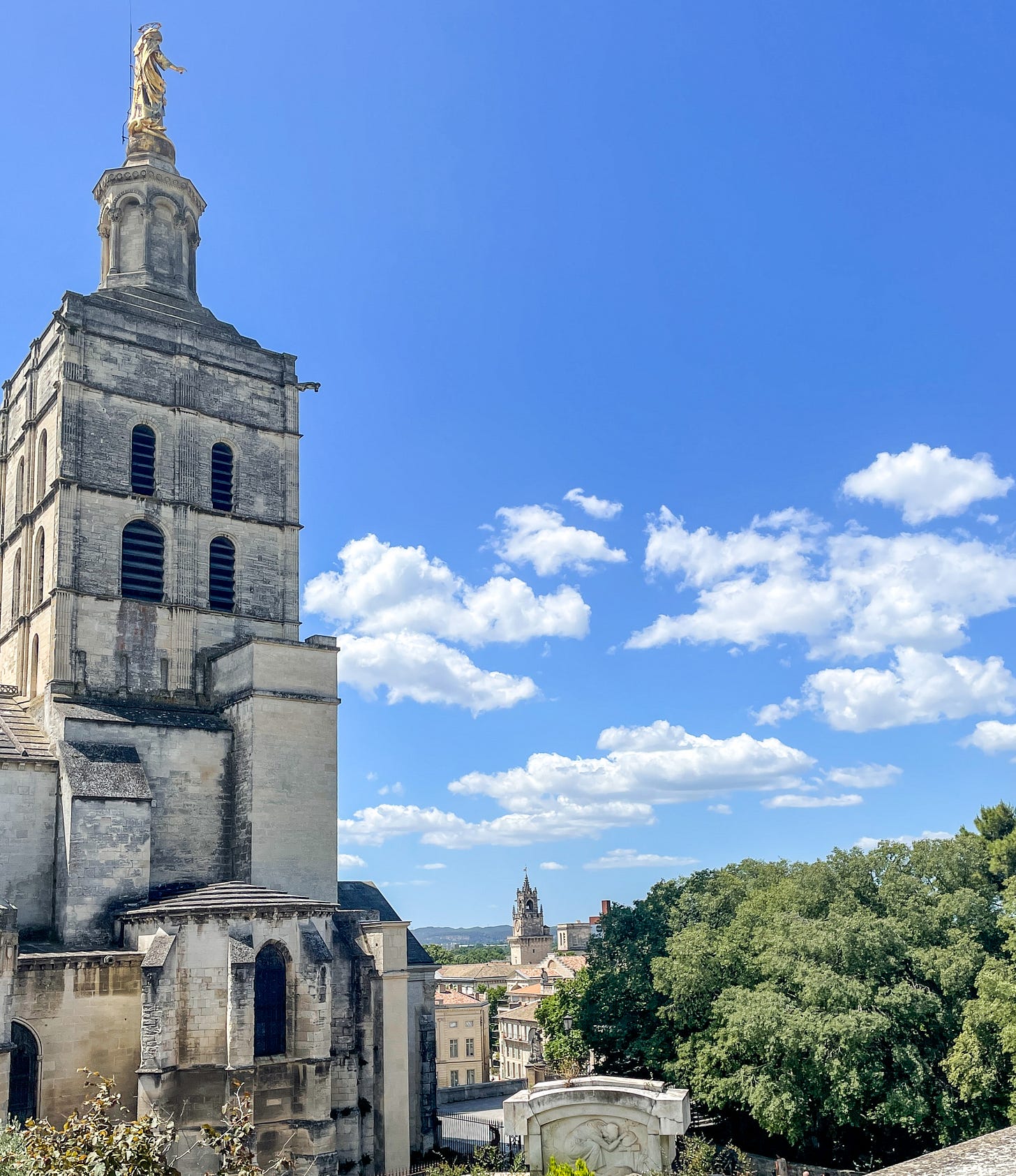


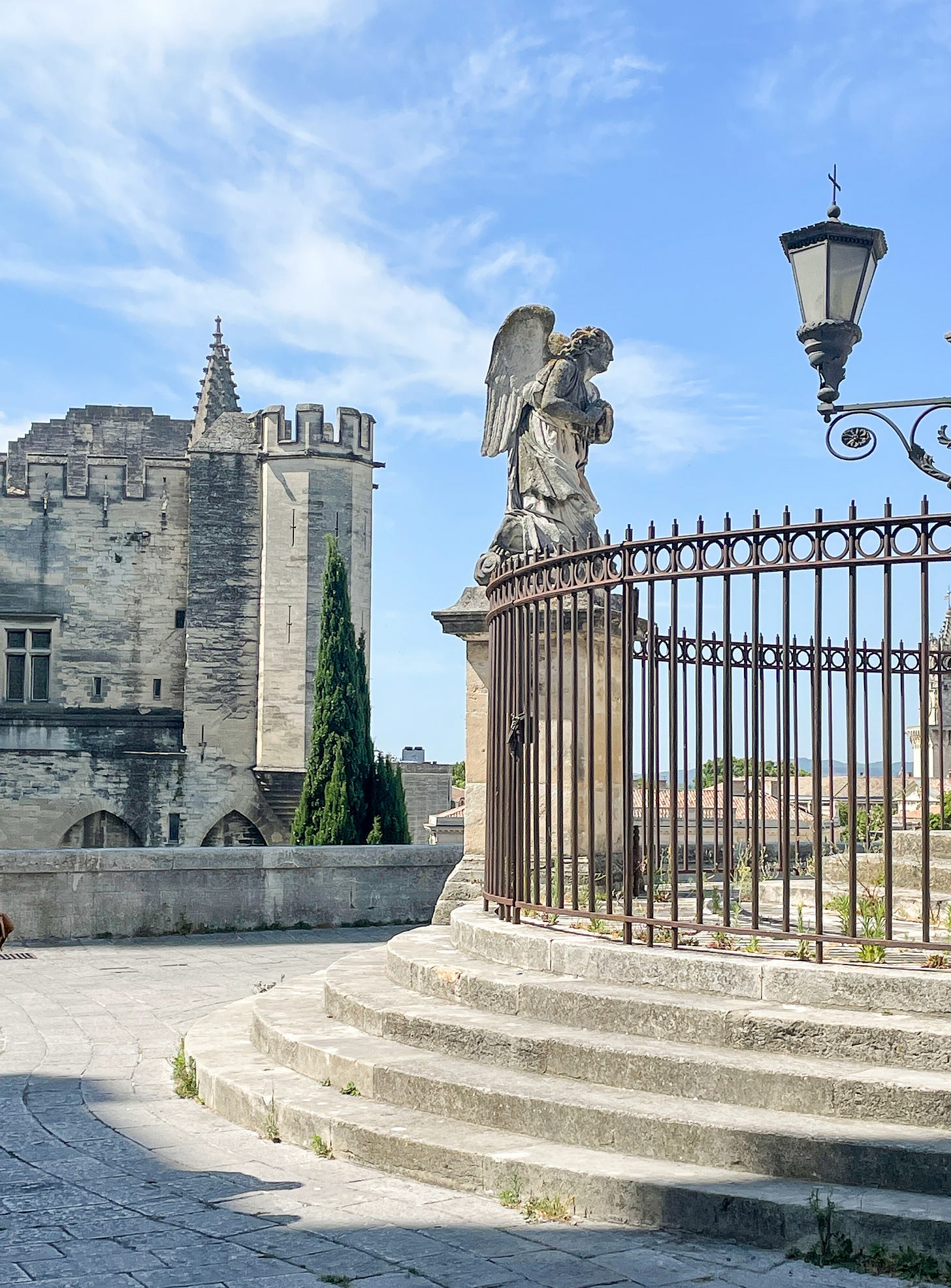

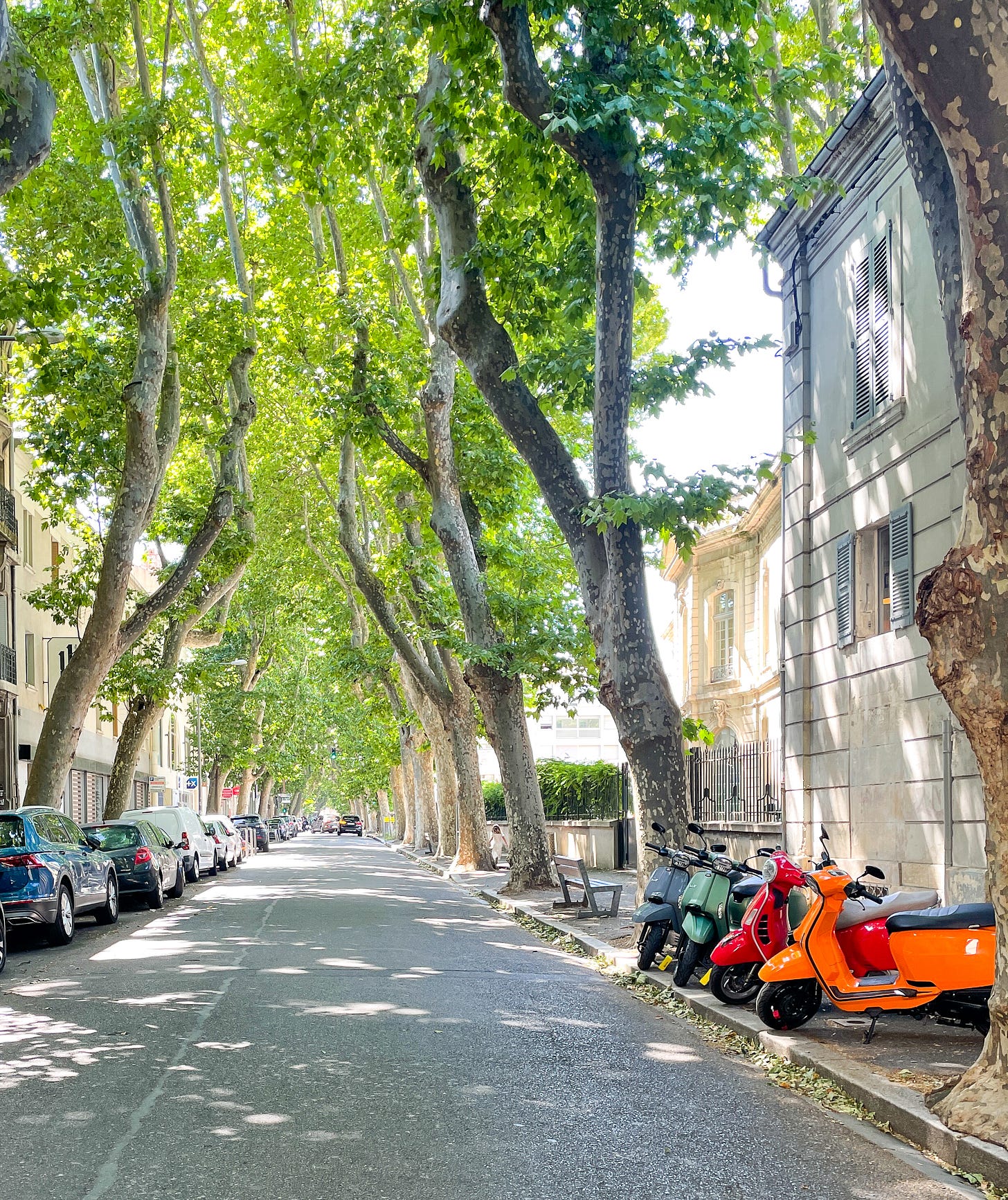
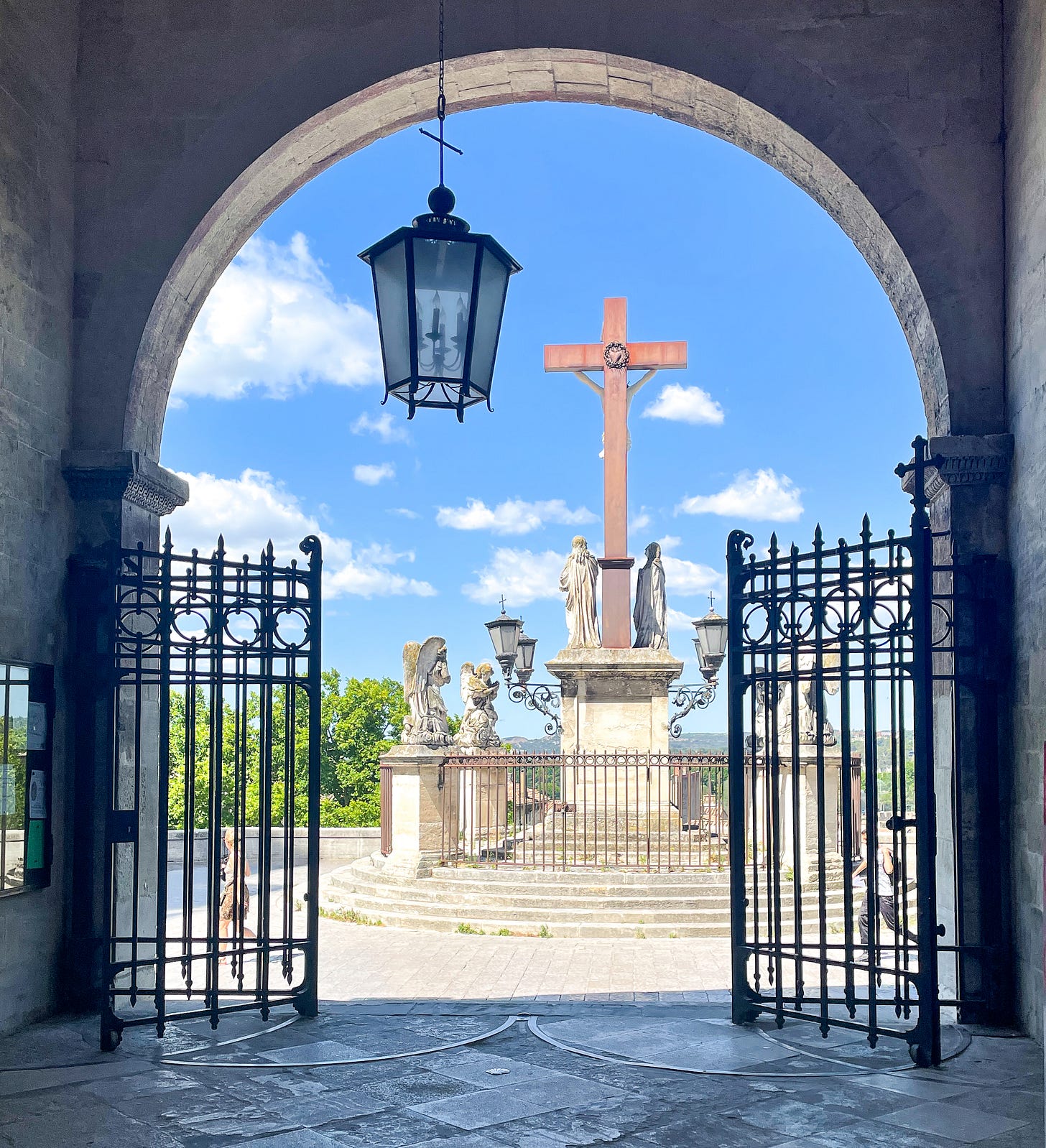


We visited Avignon over the summer and I loved it. I enjoyed every second inside the Papal Palace and I also stood on that bridge, though, sadly, I did not know about the interesting bridge history. So thanks for that!
I do think that is the miracle 💙